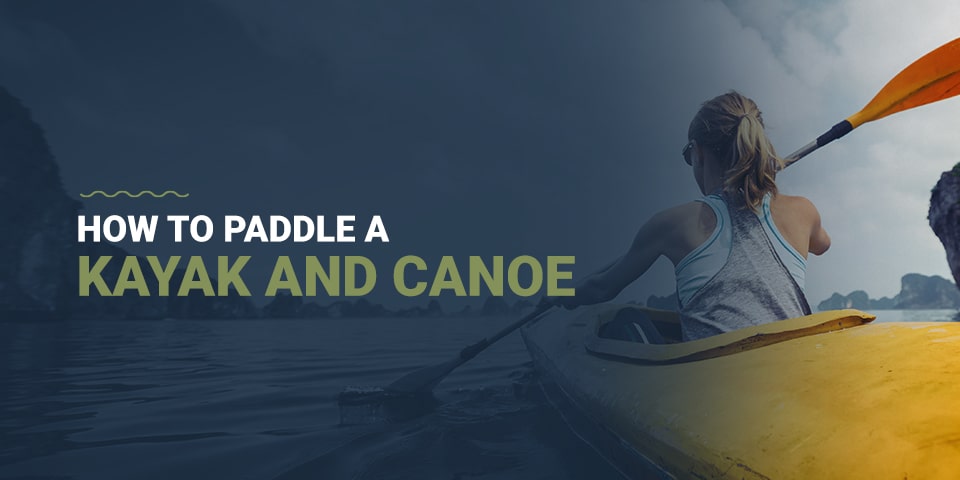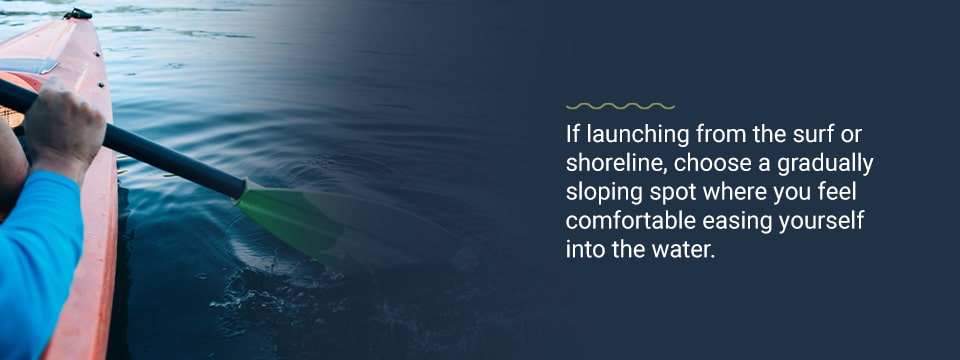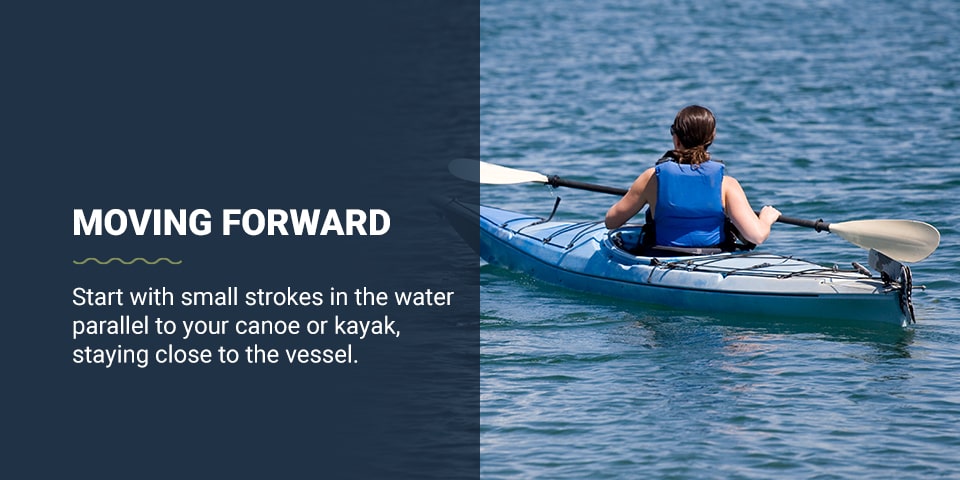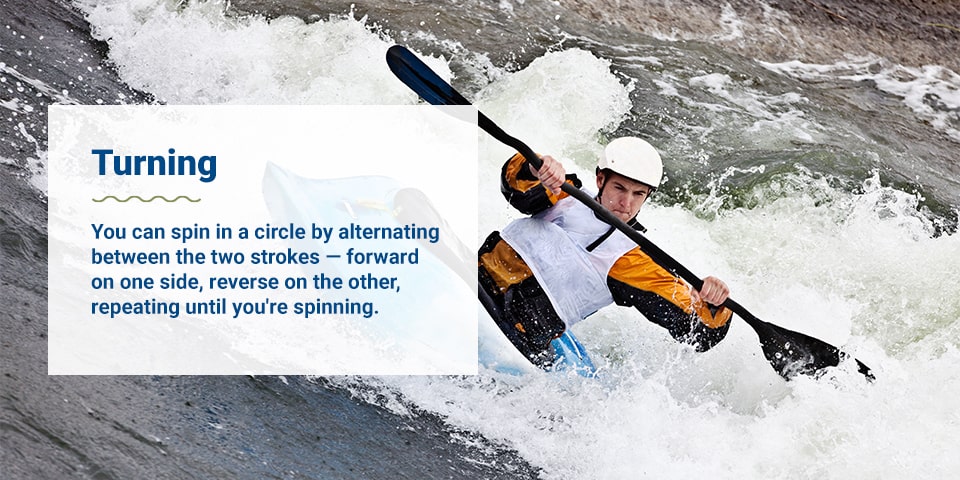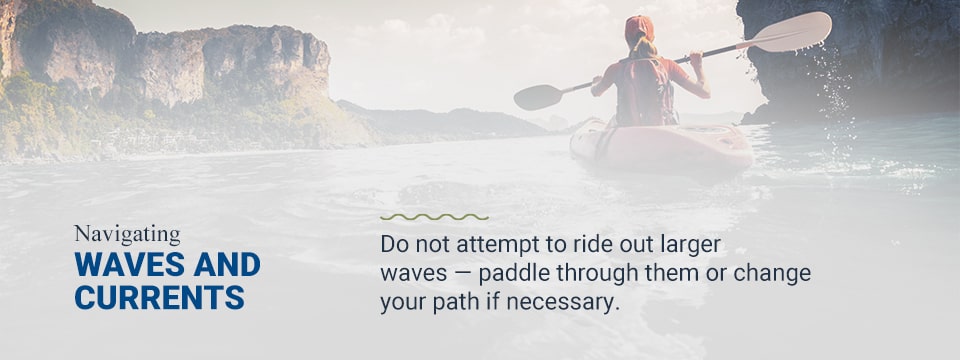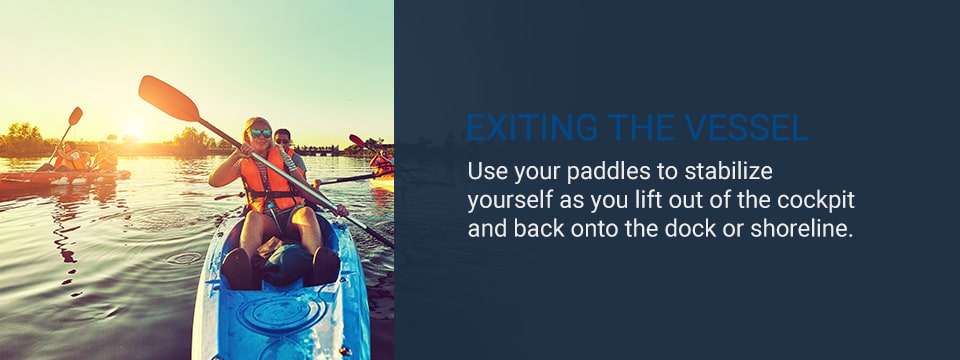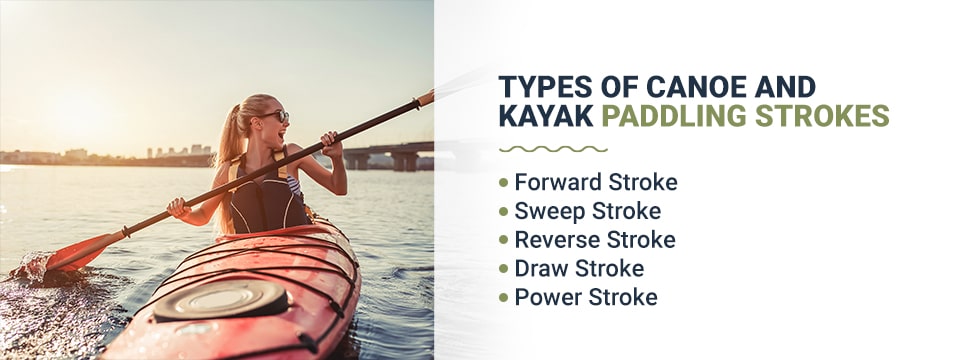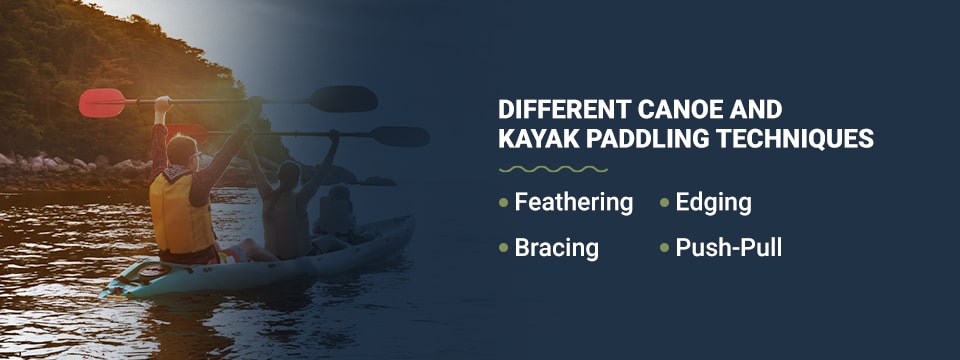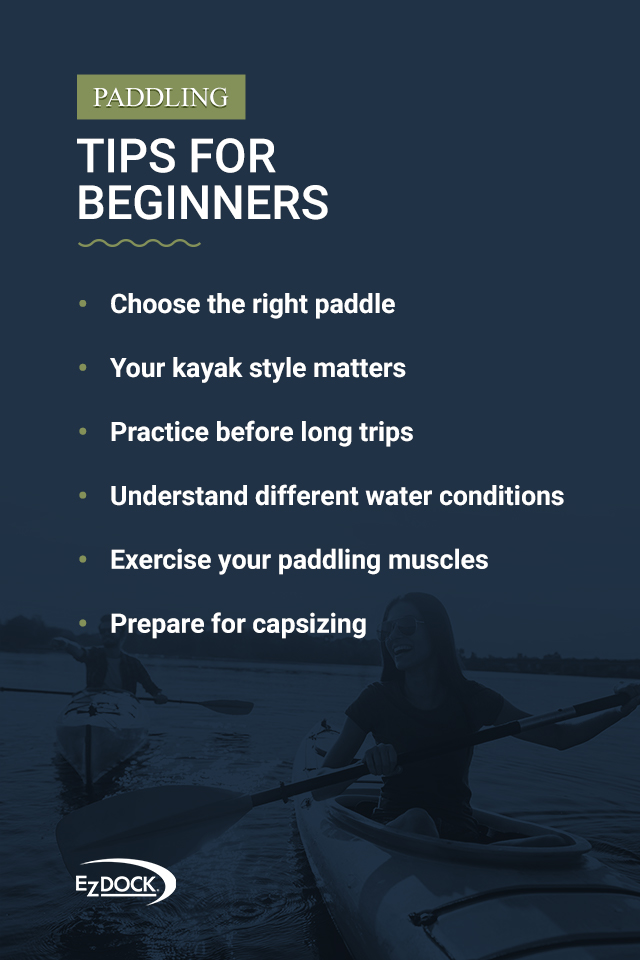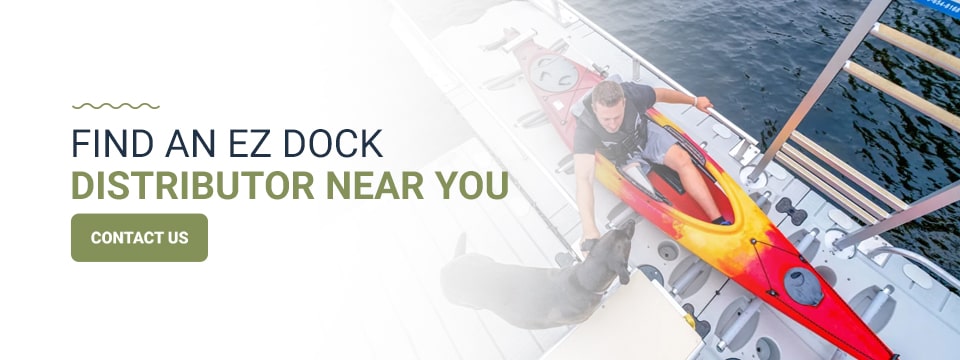Filters
How to Paddle a Kayak and Canoe
There are few ways equally rewarding and challenging to spend a day on the water than from the comfort of a kayak or canoe. Paddling is a great way to enjoy the outdoors while staying active. From an outside perspective, paddling a kayak or canoe looks fairly straightforward — just dip your paddle into the water and use the motion to propel you forward. In reality, paddling is more complex. Your comfort and safety rely on understanding how to paddle your vessel, including how to start, turn, stop and complete each stroke type to maximize results and minimize physical strain.
Read on to learn more about how to paddle a kayak or canoe, and you’ll be ready for the water in no time.
Read the full article or jump to a specific section:
- Steps for Paddling a Kayak or Canoe
- Types of Canoe and Kayak Paddling Strokes
- Different Canoe and Kayak Paddling Techniques
- How is Paddling a Canoe Different from a Kayak?
- Paddling Tips for Beginners
Steps for Paddling a Kayak or Canoe
Break down paddling instructions into these five basic areas of concentration to lay a strong foundation for more skill-building and stroke refinement in the future.
1. Entering the Vessel
You can enter your kayak or canoe from the shoreline, the surf, a dock or using an EZ Launch system. If launching from the surf or shoreline, choose a gradually sloping spot where you feel comfortable easing yourself into the water. Unless you’re in a still lake or pond, you must keep an eye on incoming waves and pace yourself accordingly. Once you are knee-deep in the water, face the front of your boat into the surf and wait for the perfect time between waves to lift yourself inside or on top. You can use your paddle to keep you stable during this process by resting the handle against the back seat and gripping it as you lift and sit. As you work, keep your weight centered to maintain balance until seated. If you’re entering your vessel from a straddle position, keep your paddle nearby for a quick getaway.
If launching your kayak or canoe from a dock, don’t forget to secure your paddle in the break line or set it out of the way where it is still accessible but safely distanced to avoid dropping it in the water. Enter your kayak one leg at a time, then retrieve the paddle and use it to push gently away from the dock.
An EZ Launch® Residential makes entering and launching even easier. The system attaches to your dock and helps you access your vessel, with a wide, V-shaped entry point and integrated paddle notches to keep your paddle secure as you transition to and from the dock. Because it’s made from the EZ Dock signature floating design, it will rise and fall with the water level, so your vessel is always ready to go.
2. Moving Forward
Once you’ve broken through the initial surf and are pointed in the direction you want to travel, keep a firm grip on the paddle. Use both hands, knuckles up, and space them shoulder-width apart on the handle. Be careful not to grip too tightly, or you risk hurting your hands and exhausting your muscles early. Keep your elbows bent at a 90-degree angle and use your torso to paddle, not your arms. Think of your upper and lower body as two separate entities that rely on your focus and posture to propel you forward.
Start with small strokes in the water parallel to your canoe or kayak, staying close to the vessel. Keep the concave side of the paddle blades facing toward you and the opposite side facing the water. As you get more comfortable or encounter twists and turns along the way, you can incorporate different kayak and canoe paddling strokes into your paddling — more on those later.
3. Slowing, Stopping and Turning
Even if you’re venturing out on a straight path through the water, you still need to know how to slow, stop and turn with your paddles:
- Slowing: To slow your vessel, reduce your paddling speed and implement reverse or backward strokes if necessary to stop quickly. Never stop in oncoming waves, or you risk capsizing.
- Stopping: Unless you’re in rough waves or strong currents, stopping your boat is a straightforward process — just do the opposite of your standard forward stroke. The natural resistance will help slow and stop your vessel. Keep your paddle angled high from the kayak or canoe as you perform a backward stroke — a lower angle may cause you to turn around instead of stop.
- Turning: You have a couple of options for turning your vessel. You can use a forward sweep stroke to navigate twists and switch directions. Place your paddle in the water as if you were going to make a standard forward-moving stroke, but instead of pulling the paddle back and repeating, make a half-circle shape alongside the boat until the paddle reaches the stern. Wide, angled movements will make larger turns. You can spin in a circle by alternating between the two strokes — forward on one side, reverse on the other, repeating until you’re spinning.
4. Navigating Waves and Currents
Before you embark on a coastal paddling trip or travel on any water with a current or undertow, research what to expect. The more you know about the water conditions — including average daily movement, temperature, how strong currents are and dangerous areas to avoid — the more prepared you will be.
Maintain your course in the waves by slicing across them at an angle. Do not attempt to ride out larger waves — paddle through them or change your path if necessary. If you encounter beam waves, which hit your vessel from the side, keep paddling and reduce bobbing movements by directing yourself toward the wave’s crest or the natural angled path left behind by each wave. Remember, most waves come in groups, usually five at a time, and there is always a pause before the next one. Use those pauses to seek a new course if necessary. As you paddle through waves, be careful not to lean too far forward. Stay centered, balanced and direct your weight toward the back. Lean into the direction of the water to steady yourself if you need to.
If water conditions become too rough or unpredictable, or you no longer feel in control of your vessel, make a safe exit to the nearest shoreline or dock.
5. Exiting the Vessel
At the end of your journey, exit your vessel the same way you entered, but reverse it. Use your paddles to stabilize yourself as you lift out of the cockpit and back onto the dock or shoreline. Do not attempt to reenter land in dangerous surf, or you could lose a grip on your vessel.
Types of Canoe and Kayak Paddling Strokes
Paddling strokes are how you operate your vessel on the water. Each stroke helps you move forward, backward, come to a stop or alter course. As you paddle, you must maintain your “box,” the area of your body made up of your chest, arms and paddle. Maintain your box formation by paddling with your torso, not your arms, and rotating your upper body as you make strokes and sweeps. Keep your hands in front of you and your eyes on your desired path. By using your torso and maintaining this box formation, you’ll protect your muscles and have more power behind movements for easier paddling.
Forward Stroke
If you’re new to paddling, you should master the forward stroke before all others. It’s the cornerstone movement that will help you propel and stay moving on the water.
To complete a forward stroke, follow these steps:
- Keep the paddle shaft upright at a relatively high vertical angle.
- Place the blade into the water near the front of your vessel.
- Using your core and torso, pull the blade in the water alongside the boat. Keep your elbows in and resist the temptation to use them to move the paddle.
- How long you hold the stroke depends on your water conditions and the type of paddling you’re doing, but don’t keep it too long. Forward strokes in still water should extend to the back of your vessel, while white water or wavy conditions will stop at about hip-distance before repeating.
- Once you’ve made a complete stroke, remove the paddle from the water, place it on the other side of the vessel, and repeat.
- As you repeat the forward stroke on both sides of your vessel, stay upright and keep your core engaged. Never rely on your arms alone.
Don’t worry if you’re not yet experienced enough to make swift forward strokes. Speed and efficiency come with time and practice.
Sweep Stroke
Sweep strokes help you turn and reverse. There are two types — forward and reverse. The forward sweep stroke helps you turn while moving forward and requires a C-shaped sweeping motion from front to back. The reverse sweep stroke does the opposite — it lets you turn while moving backward.
Here’s how they work:
- Place your blade in the water on the side of the boat opposite where you want to turn.
- Use your torso to move the blades in a wide, arcing motion that stops at the end of your vessel.
- Lift the paddle out of the water when it reaches the stern.
- Continue on the same side until you reach your path or direction.
- For large turns, you can position your paddle shaft at a horizontal angle for better results.
Reverse Stroke
The reverse stroke helps you turn around quickly when simple turns won’t do the trick. It’s often used when another vessel or obstruction enters your path unexpectedly or to avoid a large, oncoming wave.
To perform a reverse stroke:
- Start on the side you want to turn and place your paddle in the water.
- Rotate your torso to face the direction you’re turning, keeping your paddle about hip level in the water. Keep your shoulders in line with the boat.
- Keep your gaze in the direction you’re paddling, but be mindful of your surroundings on all sides.
- Keeping your core engaged, push your paddle from the back of the vessel to the front, staying close to the boat.
- Pull the paddle out of the water and repeat the process on the other side, alternating until you have slowed, reversed or stopped.
Draw Stroke
You use the draw stroke to move your vessel sideways, like when you’re trying to get close to a dock or meet up with a fellow paddler on the water. It also helps you keep better control while navigating a straight path.
Here’s how it works:
- Rotate your torso to the side, facing the direction you want to travel.
- Hold your paddle upright and rotate it so the blade is horizontal in the water on the side of the boat you’re trying to move. The other blade should be angled toward you and your vessel.
- With your paddle far from the side of your vessel, make a pulling motion to move the vessel closer toward it, keeping the blade tip submerged.
- The paddle should be positioned slightly behind you.
- Once you’re closer to the paddle, begin performing quick slicing movements in the water that extend to the back of the boat.
- Repeat several quick draw strokes in succession until you’re turned to the side.
Power Stroke
A power stroke is a special skill that gives your paddle more force. It helps you move faster and maintain better control. The best way to master a power stroke is to practice your basic movements — the forward, sweep, reverse and draw strokes — until they become second nature. The better you get at performing these, the more power you can achieve with them. Focus your training on keeping your movements smooth and fluid, especially as you switch sides between strokes. Remember to keep your core and torso engaged, as they will do most of the heavy lifting for you.
Different Canoe and Kayak Paddling Techniques
As you gain more experience with basic strokes and sweeps, you can introduce special paddling techniques to enhance your experience.
Feathering
Feathering is when you position your paddle blades at opposing angles — with one slicing through the air and the other through the water — and it requires a feathered paddle. It helps reduce wind resistance that makes it more challenging to move.
Bracing
High and low braces help you fix your vessel’s position if it’s about to capsize. They are important emergency movements to keep you in your skillset. “Low” and “high” refer to the level you’re able to hold your paddle in front of you when you perform the movement. Each involves keeping your shaft horizontal, elbows up, and shaping your body in a “C” formation as you lean over the side and brace your vessel.
The sculling brace technique is a more advanced form of bracing to avoid capsizing or rolling your vessel. Since it’s an advanced method, be sure to master basic low and high bracing before you begin training for the sculling brace technique. To perform a sculling brace, you keep your blade near the water’s surface and perform a sweeping motion while angling and pushing the blade against the water. This creates a natural pressure on the water’s surface that lets you climb your blade’s angle and perform powerful strokes to level your boat.
Edging
Edging involves tilting your vessel to one side and holding it for the sake of making a specific stroke, preventing capsize or performing more efficient turns. It requires more balance and control than leaning alone.
To edge your vessel:
- Lift the paddle shaft horizontally to your shoulders and rotate your wrists backward.
- Open your grip and place the shaft at your thumb’s base.
- Raise a knee, shifting your weight to the opposite side, creating a natural lift in the water.
- Keep your body firm and upright, tilting only the boat and not your torso.
- Return your vessel to an upright position by raising the opposite leg.
Make sure all movements are slow and controlled, or you could flip your vessel.
Push-Pull
The push-pull technique is a still-water movement that helps paddlers move more effectively.
To push-pull on a lake or pond, you:
- Use your core to push the highest arm on your paddle shaft away from your body.
- Use the other arm lower on the shaft to pull back.
- Make a pushing movement with the higher blade and keep your core engaged, pulling the lower one simultaneously.
How Is Paddling a Canoe Different From a Kayak?
The most significant difference between paddling a canoe and kayak is how you position yourself. Both sit-on and sit-in kayaks let you sit, while canoes involve kneeling. A canoe also uses a single-blade paddle, as opposed to a kayak’s two-blade paddle. This single-blade design allows canoers to develop a special J-shaped stroke to paddle in a straight line without the need to alternate paddling sides as they move.
Both vessels offer unique advantages. They both reach exhilarating speeds with enough experience, and one is not faster than the other. Longer boats move more quickly, regardless of type. Kayaks are typically easier to paddle and navigate since there is less submerged surface area, which creates less friction and paddling resistance. The two-blade design is a bit heavier to lift than the single, so it may require a longer training period before you’re comfortable.
Paddling Tips for Beginners
Knowing strokes and techniques are a great place to start, but there is still plenty to learn about using a kayak or canoe. If you’re new to the world of paddling, these tips will help:
- Choose the right paddle: Work with a professional to choose the right paddle type and size to fit the water you’re traveling on, your experience level, your height and the kind of kayak or canoe you own.
- Your kayak style matters: Sit-on kayaks are more challenging to paddle and aren’t ideal for beginners. If you’re new to kayaking, choose a sit-in model with a cockpit so you can learn critical strokes more quickly.
- Practice before long trips: Never plan a long or challenging paddling trip if you’re new to the sport. Start slow, with short, simple paths through calm waters or on a guided excursion. You can also work with a professional paddler for one-on-one instruction. Conduct all practice outings in a controlled environment, free of distractions. Traveling with another paddler is always the safest option, regardless of your experience level — but it’s especially critical for beginners. Traveling with someone more experienced than you is the safest way to learn new kayak and canoe paddling techniques, and a second person makes it easy to launch your vessel and recover after capsizing.
- Understand different water conditions: No two bodies of water are ever the same. What you master in a still pond will be very different in oceanic waters. Practice your strokes in all types of water conditions and adjust your equipment — including your vessel and paddle type — and target your training to meet new demands.
- Exercise your paddling muscles: Want to last longer on the water or achieve new paddling milestones? Incorporate paddling-specific exercises into your regular exercise routine and target critical muscles in your core, hips, legs, arms and back. For best results, your workout should include activities that help you build strength, endurance and balance.
- Prepare for capsizing: Before you learn new techniques or strokes, you must establish an emergency capsizing plan. Capsizing happens when your boat flips on its side or on top of itself. When you capsize, you can sometimes swim to shore if the water isn’t too deep and conditions are calm, but it’s not always safe to do so. You may be able to attach your kayak or canoe to a nearby paddler’s vessel, so they can help drag it to a shore or dock. If necessary, you might have to reenter your kayak or canoe by flipping it and getting inside. Practice reentering techniques before you go on potentially hazardous waters.
Find an EZ Dock Distributor Near You
EZ Dock floating docks and EZ Launch systems make it easier than ever to do what you love — enjoy the great outdoors from the comfort of your canoe or kayak. Learn more about the EZ Dock advantage and request an online quote to get started.

